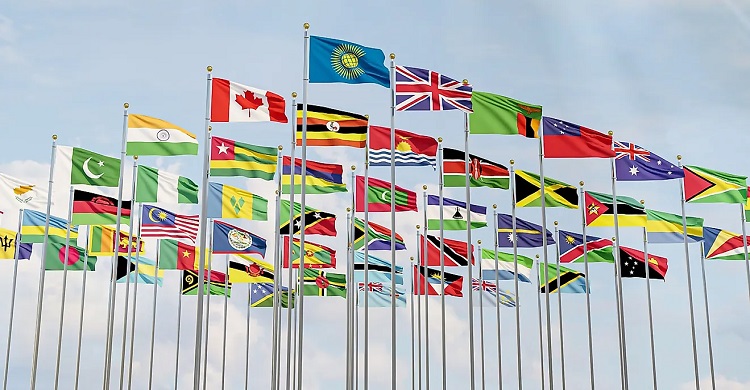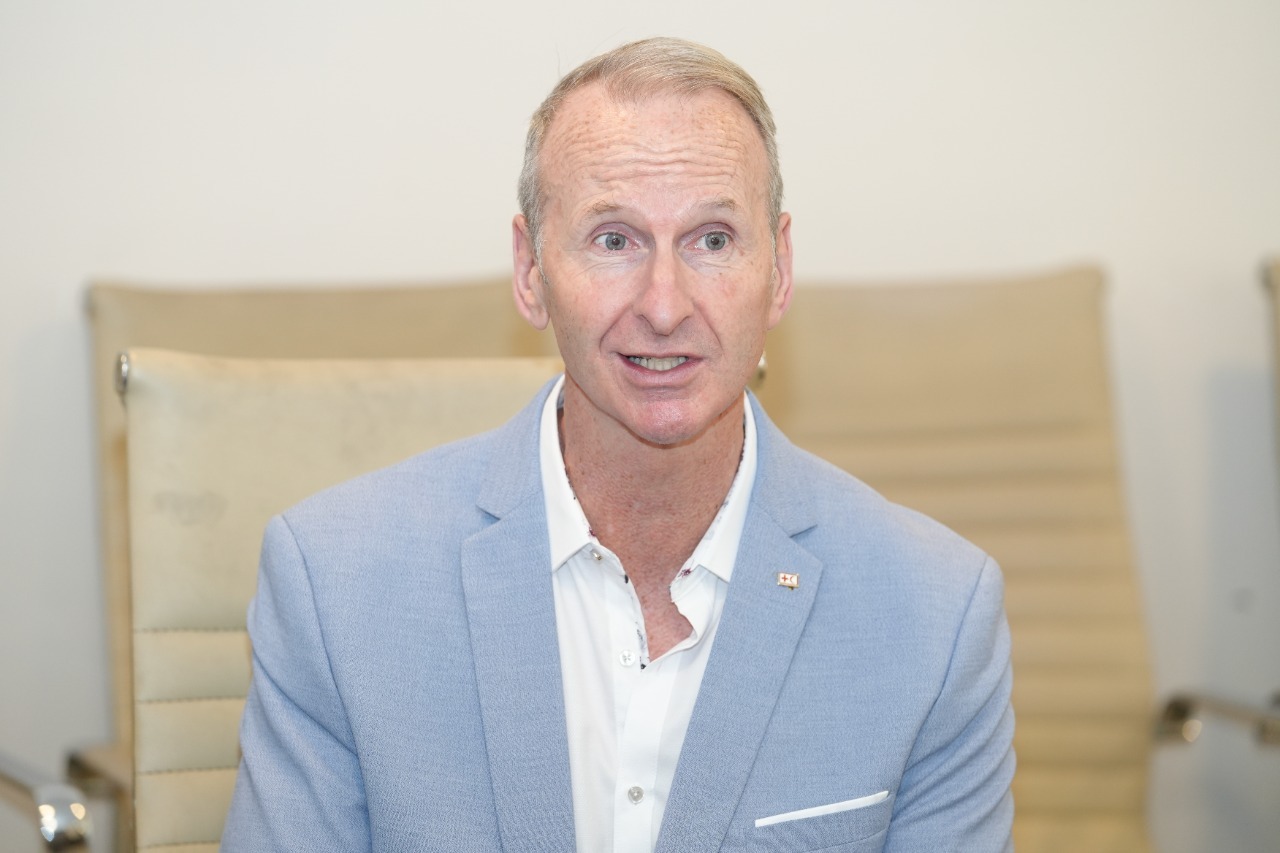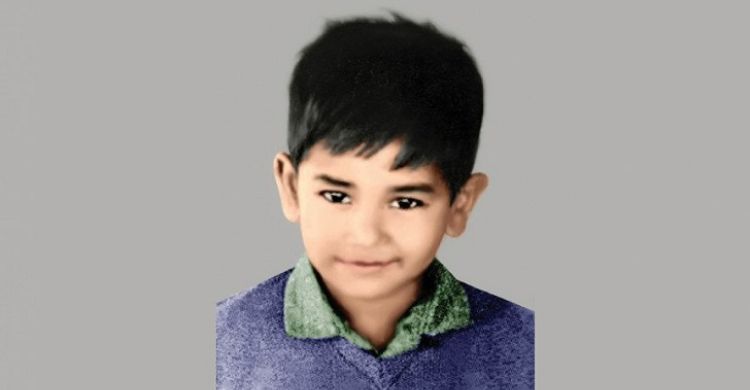
- Open Discussion
Bangladesh: The Tiger's Triumph
- Open Discussion
- 02 November, 2023 13:49:46
Priyajit Debsarkar: Bangladesh's economy stands testimony to a remarkable and impressive GDP growth rate, a credit due for the Government under the stewardship of Prime Minister Sheikh Hasina. In the four-year period preceding the COVID-19 pandemic (FY2015-16 to FY 2018-19), the country exhibited a consistently high GDP growth rate, averaging 7.4% per annum, reaching further to a record a high of 8.2% in FY 2018-19. With the onset of the planetary pandemic, the GDP growth plummeted to 3.4% in FY 2019-20, the lowest since 1991, which was in alignment with the rest of the globe, especially the neighbourhood of SE Asia. The Father of the Nation, Bangabandhu Sheikh Mujibur Rahman, dreamt of a golden Bengal, an ambitious vision indeed.
Covid challenge – However, the economic growth rebounded to 6.9% in FY 2020-21, supported by the Government's fiscal and monetary stimulus to tackle the impact of the planetary peril of COVID-19. Further, post the recovery of the pandemic, the country's GDP growth rate increased to 7.25% in FY2021-22, supported by buoyant economic stimulus, predominately in the industry and service sectors. The strong domestic demand is also reflected by sharp import growth and supported by a continued external demand indicated by remarkable export growth. Moreover, with the help of the Government's growth-supportive monetary policy, an uninterrupted inflow of credit to both the private and public sectors played a crucial role in output growth.
The key indicators of the economic advancement of Bangladesh: -
▪ Bangladesh graduated as a lower middle-income country according to the standard of the World Bank on 01 January 2015. A nation that came into existence barely 52 years ago is a phenomenal achievement indeed.
▪ Bangladesh received the final endorsement from the United Nations to graduate from a least developed country in 2021. A country that was heavily dependent on aid post-independence, as it was left bankrupt by the West Pakistani administration and military.
▪ The average GDP growth during the last 14 years was more than 6.7 percent, which, in the context of SE Asia, is nothing short of a miracle.
▪ According to a popular European Think Tank, Spectator Index, Bangladesh has achieved 188 percent GDP growth and topped the list of countries during the 10 years (2009 to 2019) of pre-COVID.
▪ Bangladesh achieved GDP growth of a phenomenal 3.45 percent during the COVID-19 pandemic. It is to bear in mind that most of the other countries in the region and beyond experienced negative growth. Within a short period of time, immediately after the COVID-19 pandemic 21, the economy returned to the correct trajectory course of higher growth. In FY2020-21, Bangladesh achieved a GDP growth of 6.94 percent and in FY2021-22, it stood at 7.10 percent. In FY 2022-23 it clocked at 6.03 percent.
▪ At the time of independence, Bangladesh had a GDP of only US$ 6.3 billion in 1971. It increased to US$ 100 billion in 2009. The GDP of Bangladesh has quadrupled since then to US$ 460.2 billion in FY2021 -22. The country which was born merely half a century ago from a bloody nine-month war of independence against the tyranny of Wet Pakistani forces and their auxiliary local collaborators of East Pakistan (Al Razakars, Al Badar, and Al Shams, a few amongst many).
▪ As per the size of GDP, Bangladesh was the 60th largest economy in FY2008-09. It is now the 35th largest economy in the world. Bangladesh will become the 24th largest economy by 2037, according to a report published in December 2022 by a UK-based think tank, Centre for Economics and Business Research. The governmental policy to maintain a low debt-to-GDP ratio along with growth in exports of finished goods.
▪ The total employment of the country was 4,73,00,000 in 2007. During the last decade and a half, the present government of Awami League has created 2,35,00,000 fresh jobs. In 2023, the total number of jobs stands at an estimate of 7,11,00,000.
▪ The net unemployment rate declined to 3.2 percent in 2022 from 4.5 percent in 2010 (of course, we need to take into account the layovers of from the Pandemic, but it still is a spectacular feat).
▪ In the workplace, the participation rate of the women labour force has increased to 42.7 percent in 2022 from 36 percent in 2016. An inclusive workforce is pivotal for any country to succeed, and primarily, if led from the top, the benefits trickle down.
▪ Per capita income increased four-fold from US$ 686 in FY2007-08 to US$ 2,765 in FY2022-23. This figure is estimated to be 14% of the global world average.
▪ The rate of poverty has decreased by more than 50 percent to 18.7 percent in 2022 compared to 40 percent in 2005. During the same time, the rate of ultra-poverty has decreased by three-fourths, from 25.1 percent to 5.6 percent.
▪ Budget allocation in the social sector experienced a 9-fold increase from Tk 13,845 crore in FY2009-10 to Tk 1,26,272 crore in FY2023-24. Investing for future generations is vital for the government to secure a firm berth in the global economy.
The capacity of power generation increased to 27,361 MW in 2022 compared to 4,900 MW in FY2009-10; 100 percent of the population of Bangladesh has been brought under the coverage of electricity by the program "Sheikh Hasina's initiative - electricity in every house." The dream of the gift of light to every household has become a reality and was one of the key deliverables of the present government. Energy security is an absolute necessity for the country to keep itself on the track of prosperity. Bangladesh also has an edge in the neighborhood when it comes to natural gas and the use of alternative energy like solar and wind generation capacity.
Bangladesh has partnered with the State Nuclear Energy Corporation of the Russian Federation, Rosatom, in the construction of Rooppur Nuclear Power. The first unit is expected to be completed by the end of 2023, and the second unit by 2025. Once fully operational, Bangladesh will join an elite club of nations generating nuclear energy across the globe. The total capacity of power generation is expected to be 2400 megawatts.
Digital Centers have been established in 4,550 Union Councils. Besides, internet connectivity has been brought to the doorsteps of the people by laying optical fibers under the sea and launching the Bangabandhu satellite into space. Post the pandemic of COVID19, digital connectivity and inclusiveness are crucial to sustaining and encompassing growth and development. Uplifting the digital dividend will add additional benefits to the masses as technology will drive the future.
Implementation of a large number of mega-projects is currently underway in the country that are strengthening the basis of economic progress. The operations of the Padma Bridge and the Metro Rail have already begun. Completion of several other significant projects, including Payra Seaport, and Matarbari Seaport, will add a new dimension to the success of the economy. One hundred economic zones are being established for environment-friendly industrialization and to enhance domestic and foreign investment along with youth employment. The soon-to-be inaugurated Terminal 3 at the Dhaka International Airport will equip the country to handle up to 37 aircrafts and 12 million passengers. The terminal will also have integrated metro rail connectivity for a seamless transfer to the city. In terms of cargo handling, the terminal will add in multi-fold benefits to exports. Currently, the project is being jointly implemented by Japanese manufacturer Shimiju and Korean company Samsung, with JICA investing BDT 16,141 crore. Besides, the remaining BDT 5,258 crore is financed from Bangladesh government funds.
Progress in the Social Sector: -
In addition to economic progress, Bangladesh's enviable success compared to neighboring and similar countries in social variables, including health and education, has drawn the attention of the world. The Prime minister, received the
Sustainable Development Goals (SDG) Progress Award in 2021 in recognition of the success of SDG implementation.
Bangladesh is a nation of approximately 170 million people, and reaping the Democracy dividends has indeed played a critical role in the country's transformation to be nicknamed the Asian tiger. The transformation of the government's policies to a stable, prosperous, progressive, and inclusive nation has won immense praise and accreditation not only regionally but globally. The multi-ethnic democratic fabric of the country is the fundamental asset that needs to be preserved and can only be achieved through a peaceful and thriving democracy with rock-solid mechanisms that are independent in place. Active engagement in various multilateral and multinational forums, including the United Nations, the Commonwealth, and the BIMSTEC initiative, is another notable seal of approval to this process. Bangladesh has taken a pivotal position and leadership in addressing global challenges ranging from climate change to terrorism from migration to humanitarian crises, for example, in the immediate neighbourhood of Myanmar. Thus the Democracy dividend has not only proven to act as a catalyst for the economic transformation, but it will further complement the propulsion of the economy to global standards, acting in synergy.
• In 2008, the mortality rate of infants under 1-year was 41 per thousand. This rate has halved to 22 per thousand in 2021.
• The under-five rate of infant mortality decreased from 68 per thousand in 2005 to 28 per thousand in 2021.
• Number of medically trained birth attendants increased from 15.6 percent in 2004 to 57.9 percent in 2019
• Safe drinking water coverage has now increased to 97 percent
• Sanitation coverage currently stands at 85.8 percent
• Average life expectancy increased from 66.8 years in 2008 to 72.3 years in 2021
• The literacy rate in 2008 was 55.8 percent. In 2021, it increased to 76.4 percent (age seven years and above)
• Enrolment rate in primary education stands at about 98 percent
• The rate of technical education has increased from just 1 percent in 2010 to 17.2 percent at present. The COVID-19 pandemic has also leapfrogged the lever of digit penetration and awareness as well.
The Vision 2021 was presented to the nation on the eve of the formation of the government in 2009, the main goal of which was to build an economically prosperous and egalitarian digital. In the past decade and a half, under the strong leadership of PMSH, Bangladesh has made unprecedented progress in all areas, including economic, social, political, cultural, scientific, and infrastructure, and laid a sustainable foundation for a developed, prosperous-smart Bangladesh by 2041. Rapid growth needs to be balanced with an emphasis on the equitable distribution of the benefits for all and not the few.
These are some of the critical challenges for the government to address, and food security, including nutritional optimization, will be vital in the long-term climate-resilient nation of Bangladesh. The challenge of urban transformation from the hinterland and infrastructure development connectivity in the diversifying role of major cities of Bangladesh will play a pivotal factor by 2041. Taking the stress out of the Dhaka metropolis and creating sub-smart towns dotted throughout the country will also alleviate the overburdened and over-stretched state resources for the capital. Hence, capacity building in rural infrastructure, micro-credit programs, and graduating of low-skilled manufacturing to a semi-skilled environment using new frontiers of technology like artificial intelligence will also be very effective tools for this journey.
Diminishing Digital Divide –It is on this basis that by 2041, we would see a 'Smart Bangladesh' as envisioned by the PMSH. The dreams of Smart Bangladesh will be realized based on four main pillars, i.e. (1) Smart Citizen (2) Smart Government (3) Smart Society and (4) Smart Economy.
In 'Smart Bangladesh,' the per capita income will be at least US$ 12,500; less than 3 percent of people will be below the poverty line, and extreme poverty will be reduced to zero; inflation will be limited between 4-5 percent; budget deficit will remain below 5 percent of GDP; revenue-GDP ratio will be above 20 percent; investment will be 40 percent of GDP. Bangladesh will achieve 100 percent digital economy and science and technology-based literacy. Healthcare will reach everyone's doorstep. All the services required by the citizens will be at their doorsteps, including automatic communication systems and sustainable urbanization. A paperless and cashless society will be created. Most importantly, a society based on justice and equality will be established in Smart Bangladesh.
Digital equality in the vision for Bangladesh 2041 is essential for the success of the digital transformation. They were ensuring that everyone has the availability, affordability, and accessibility to information technology for maximum participation in society, democracy, and the economy. This model will have different layers and a multi-channel, multi-platform approach to promote digital inclusion. The method should be, even without any form of digital connectivity, not even a simple mobile phone, an ordinary citizen can still avail the benefits and the services of this platform from the nearest digital center, which would act as the information radiator across the country. Hosting a multitude of non-governmental services along with the vital and essential government ones under the national portal, one umbrella approach would also enable the success and penetration of the program.
According to IMF, in 2022, the per capita GDP of BD was $2,688, Pakistan was $1470, Sri Lanka -$3,474, Nepal-$2389, Myanmar-$1096 and India was $2389. However, Bangladesh is not immune nor insulated from economic pressures, which are associated with high global commodity prices, high imported inflation, and critical supply chain disruptions. International geopolitical scenarios in Central Asia and the fallout of age-old conflicts in the Middle East are of particular concern. Bangladesh also relies heavily on foreign remittances; hence, a slowdown in any vital labour market could also impact the country's GDP.
However, it is beyond doubt that, a basket case economy has now transformed into a nest of plentiful prospects, surpassing and, to an extent, surprising some.
Priyajit Debsarkar / Author / London UK, www.priyajit.co.uk

























Comment ( 0)